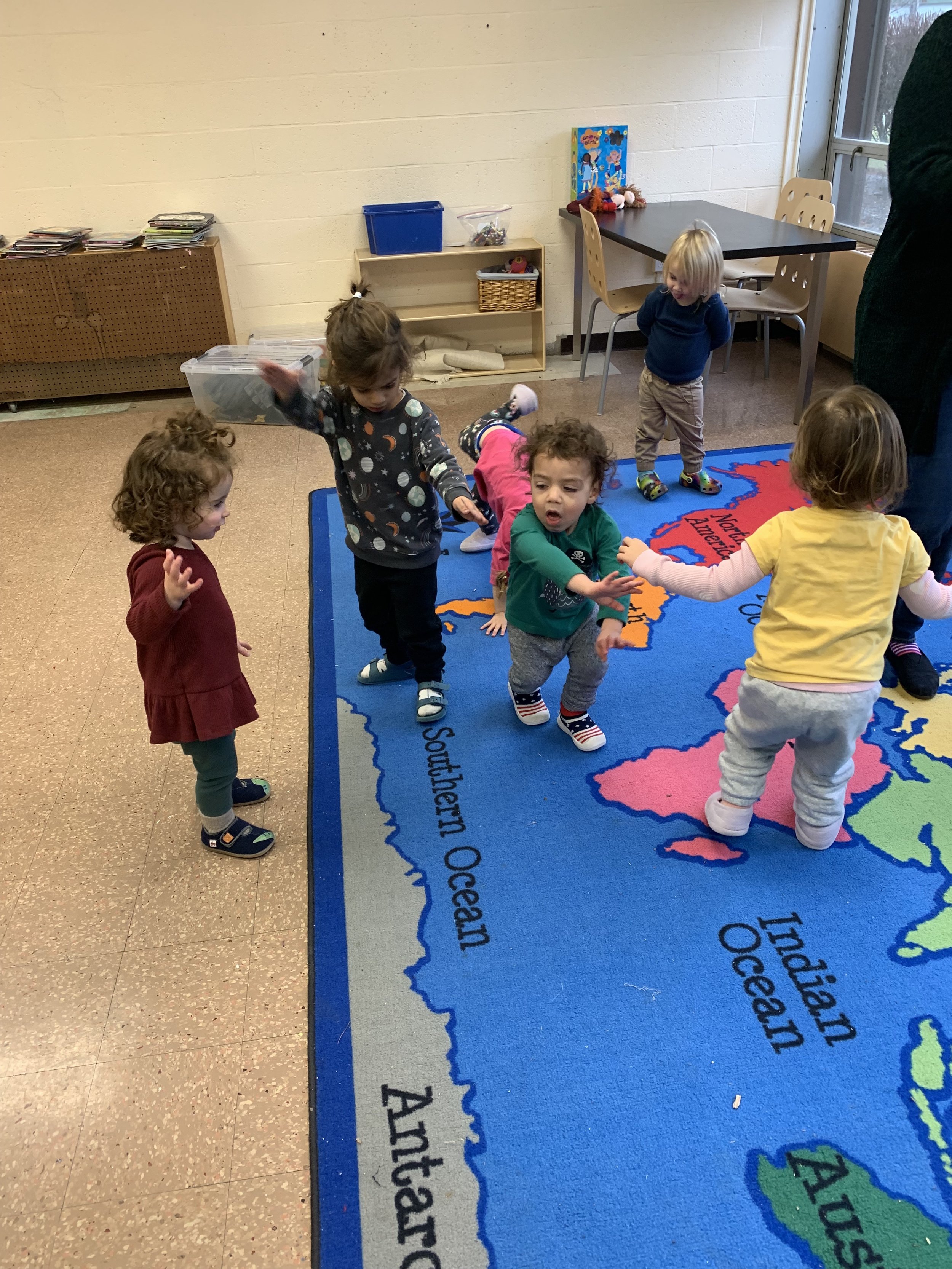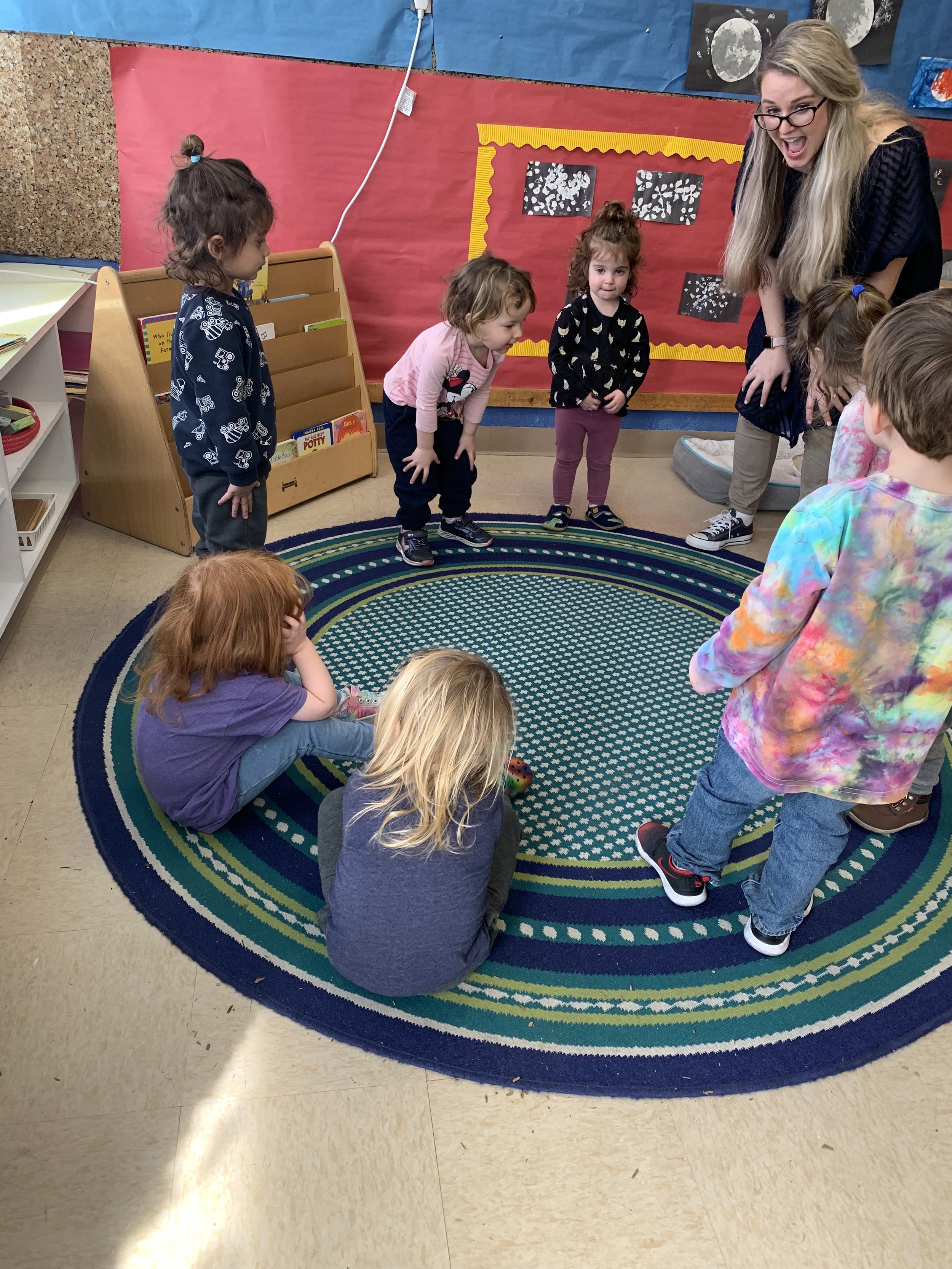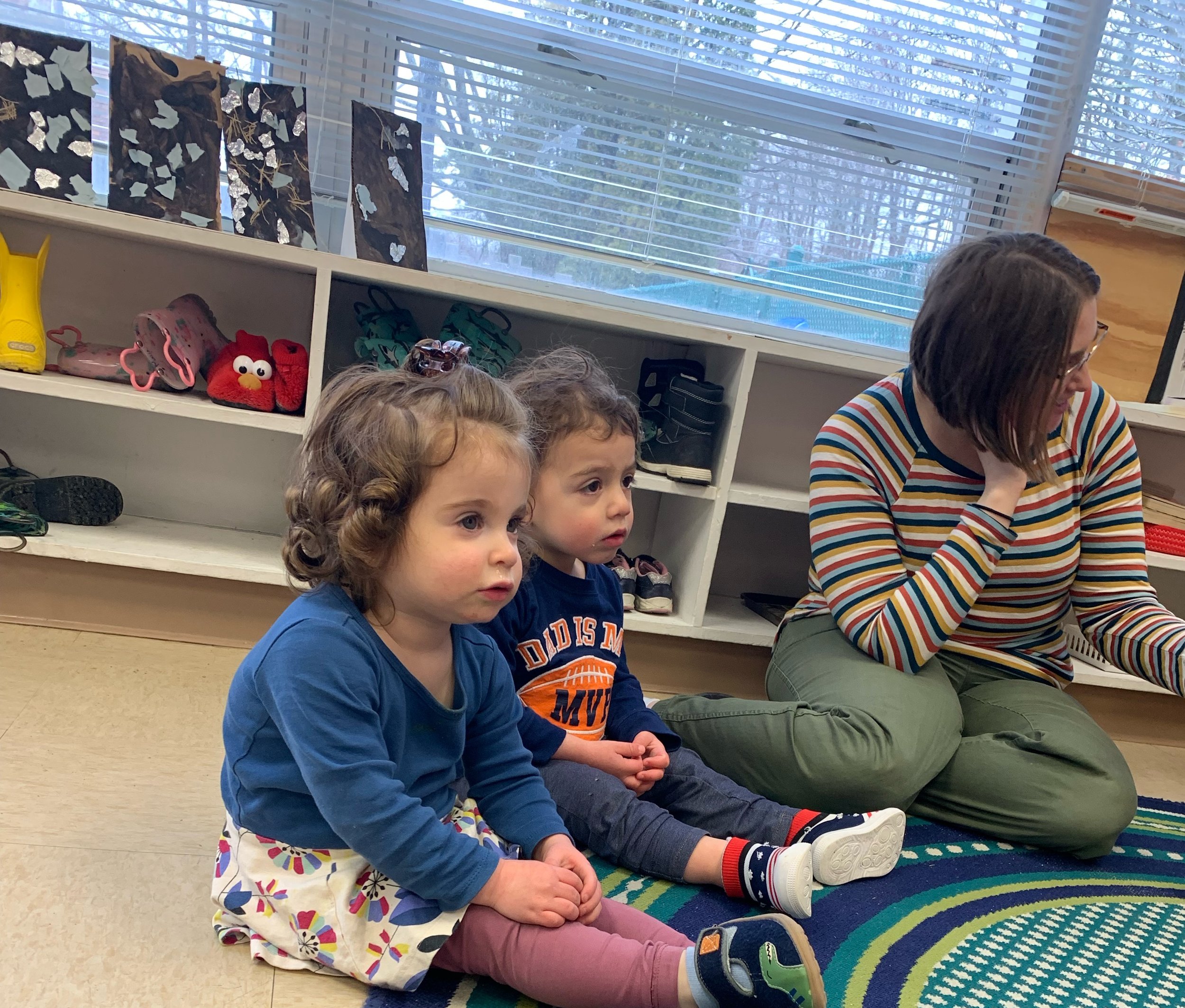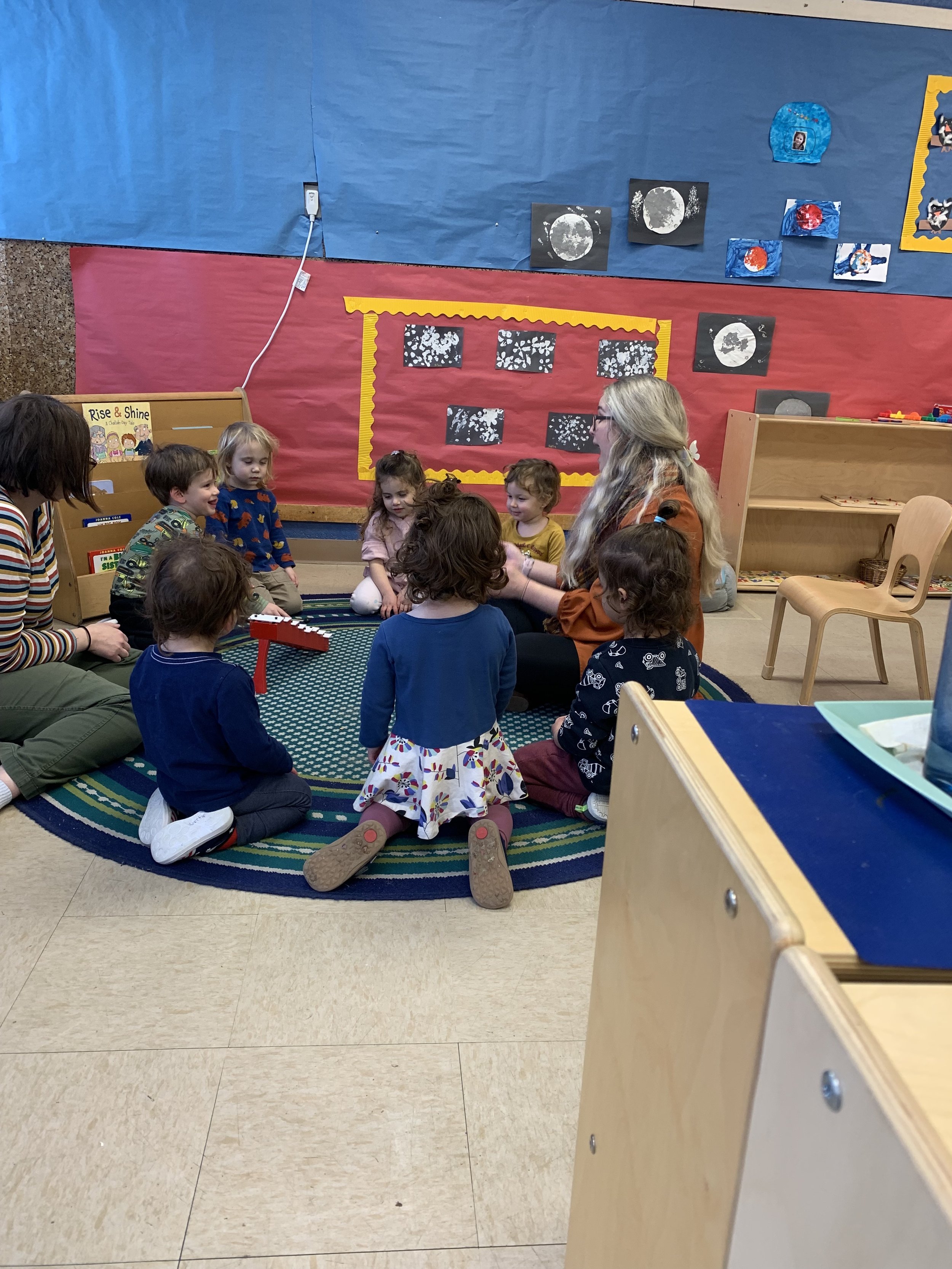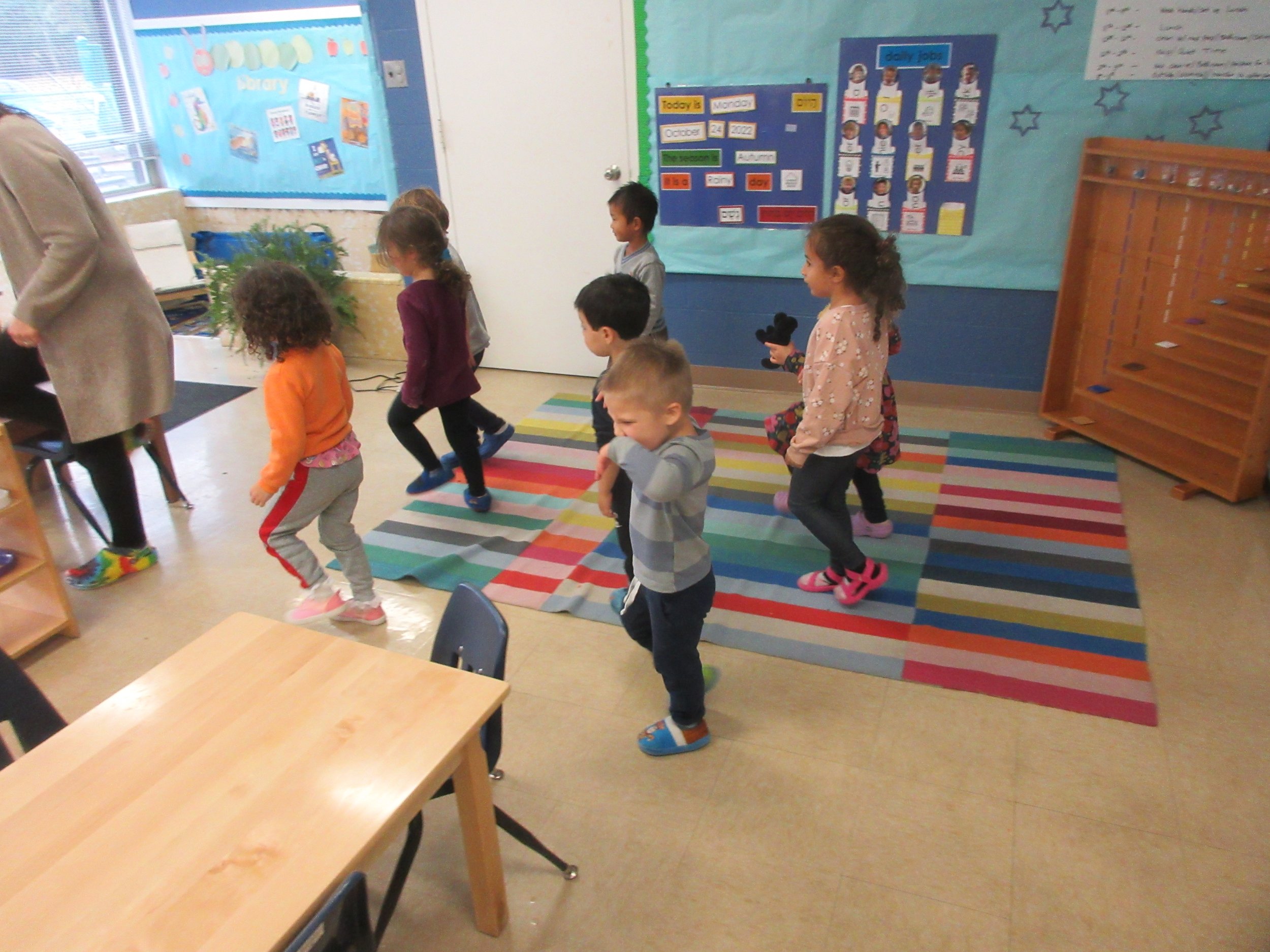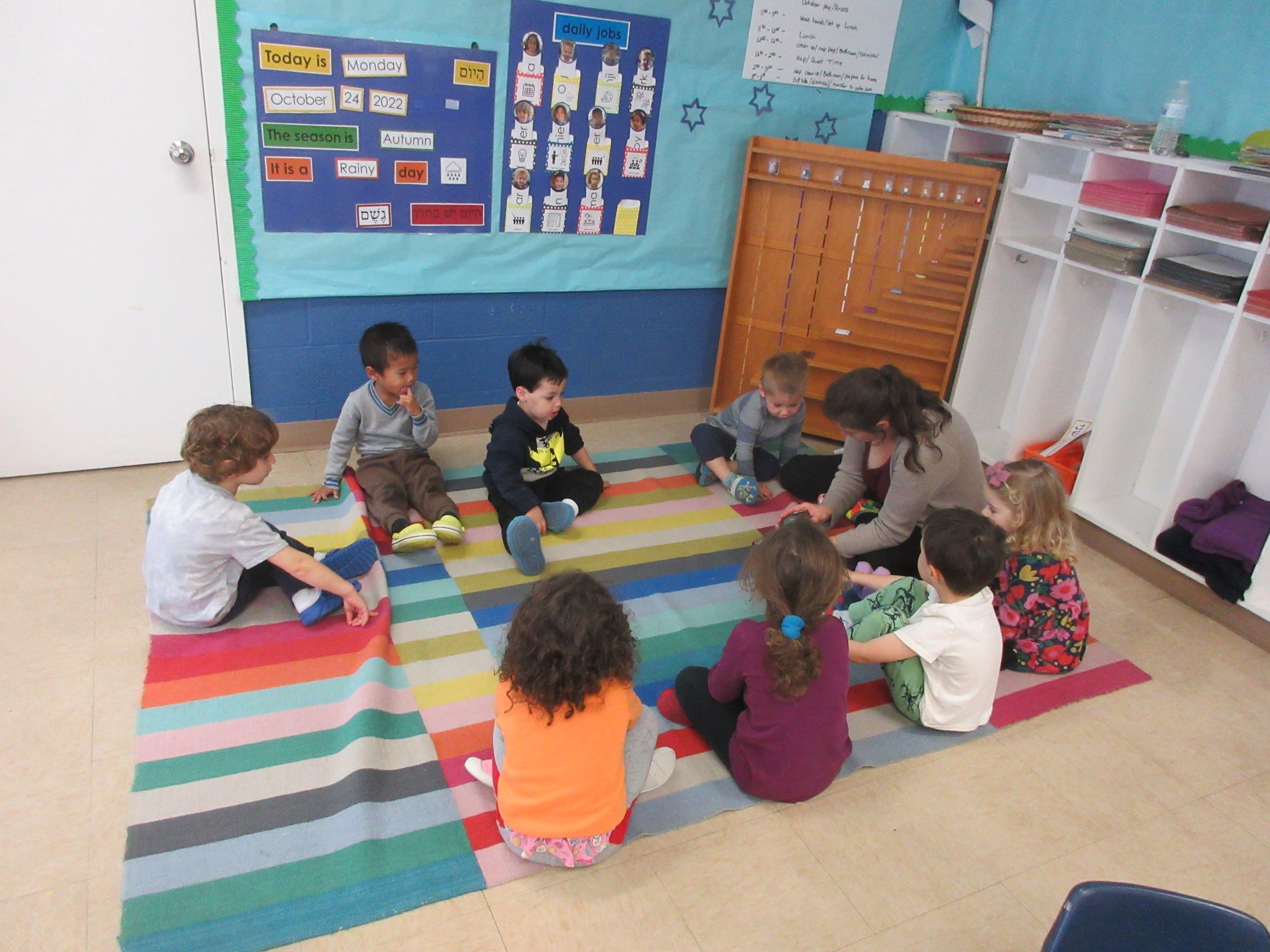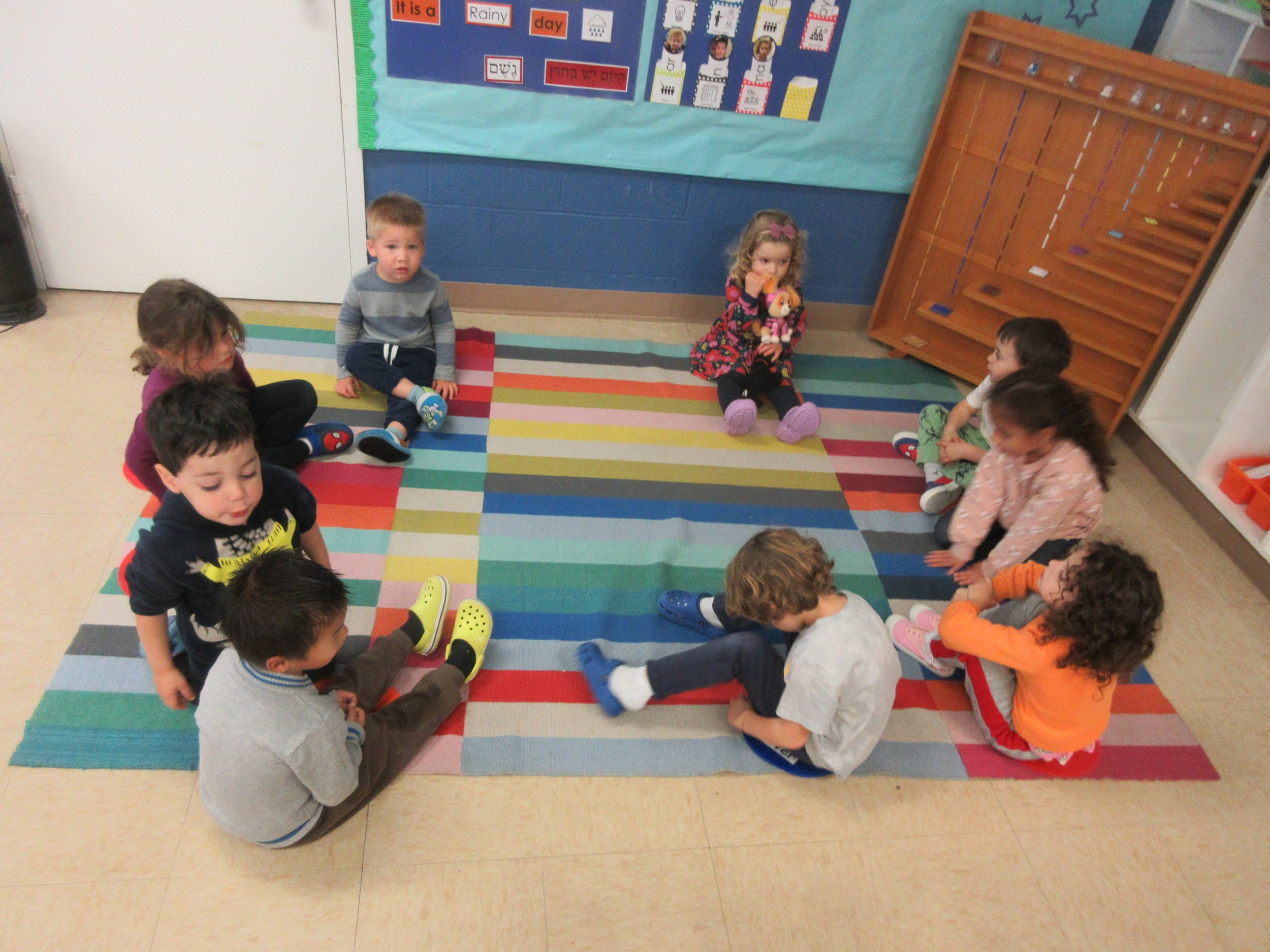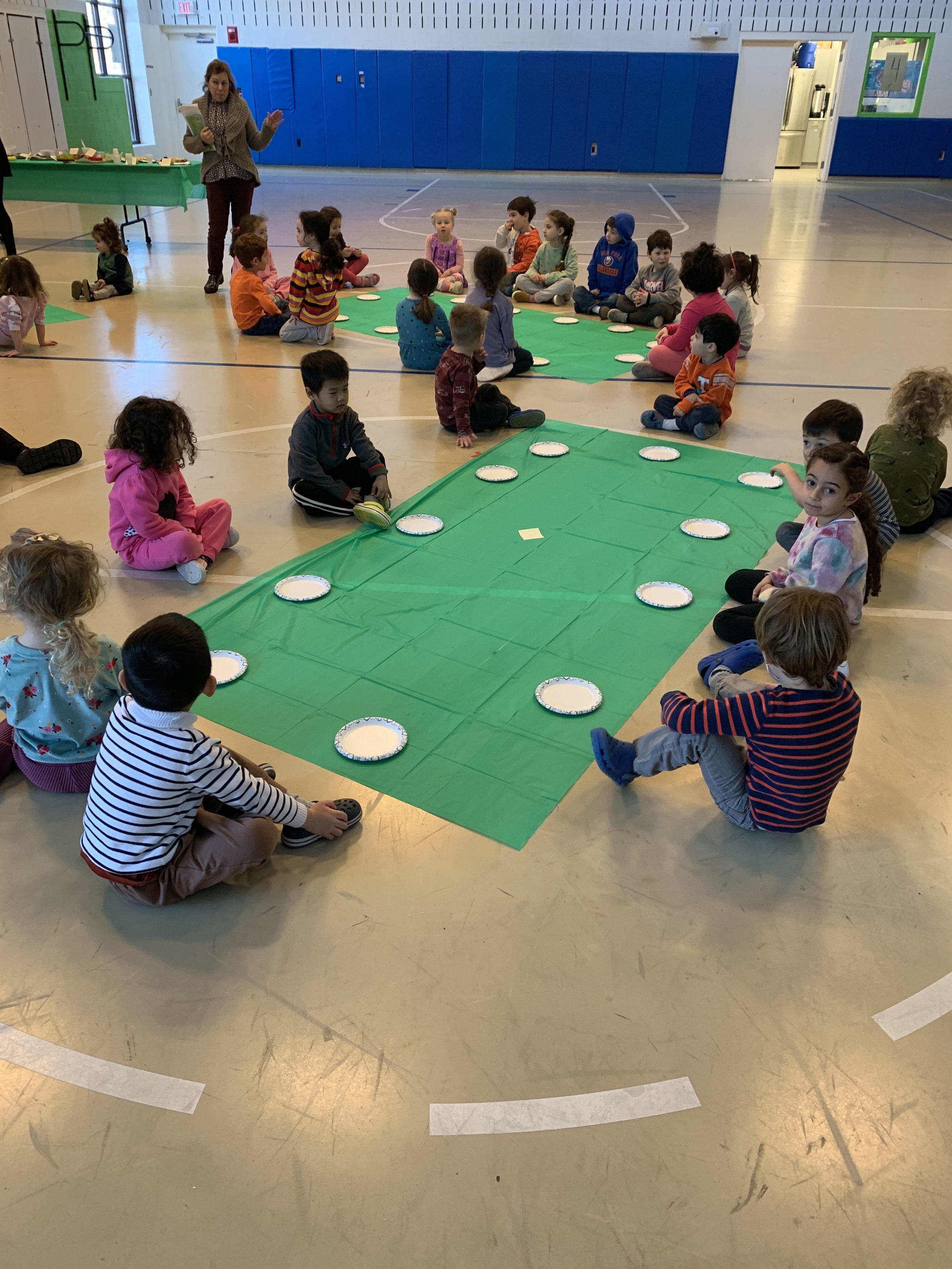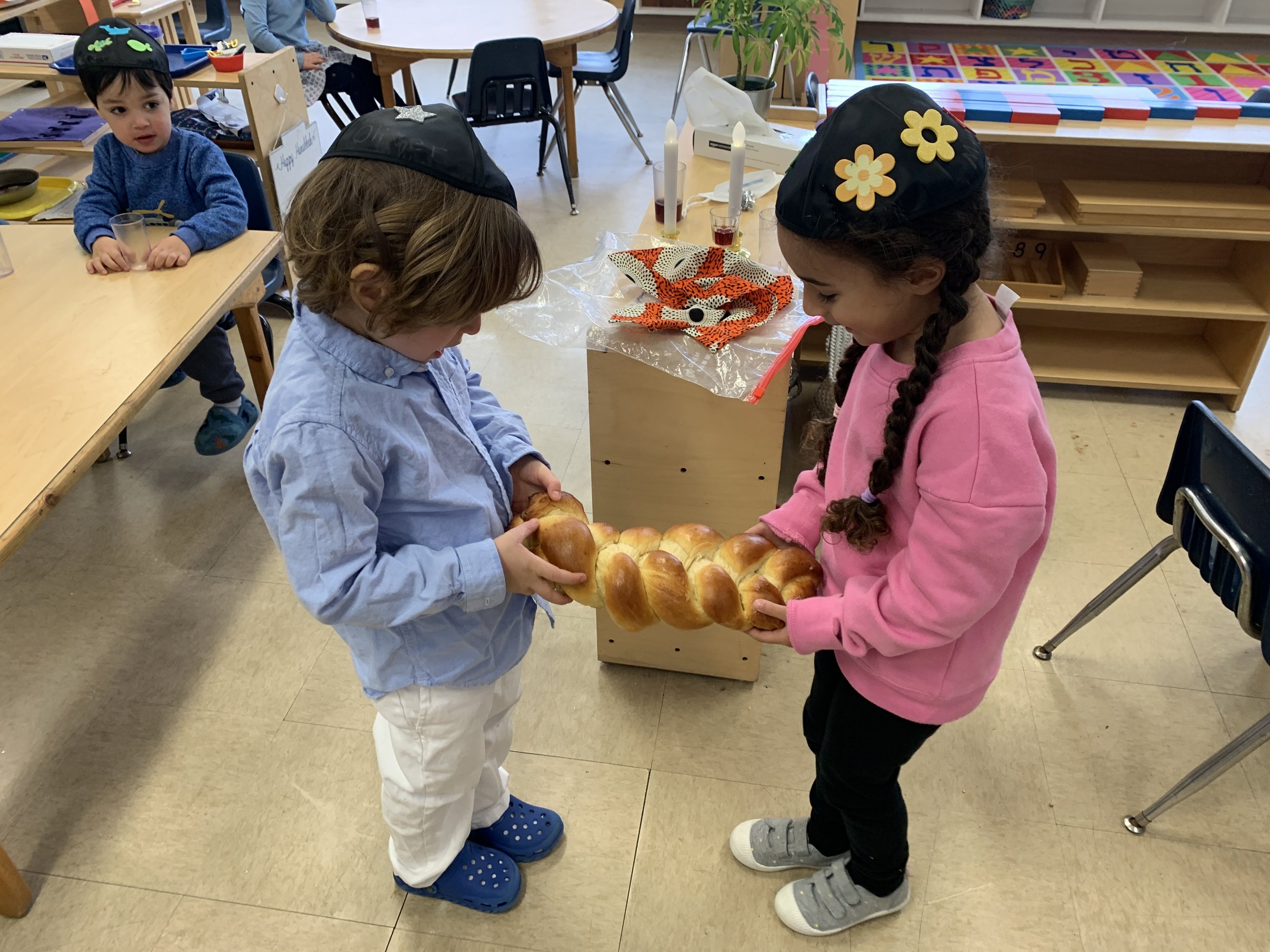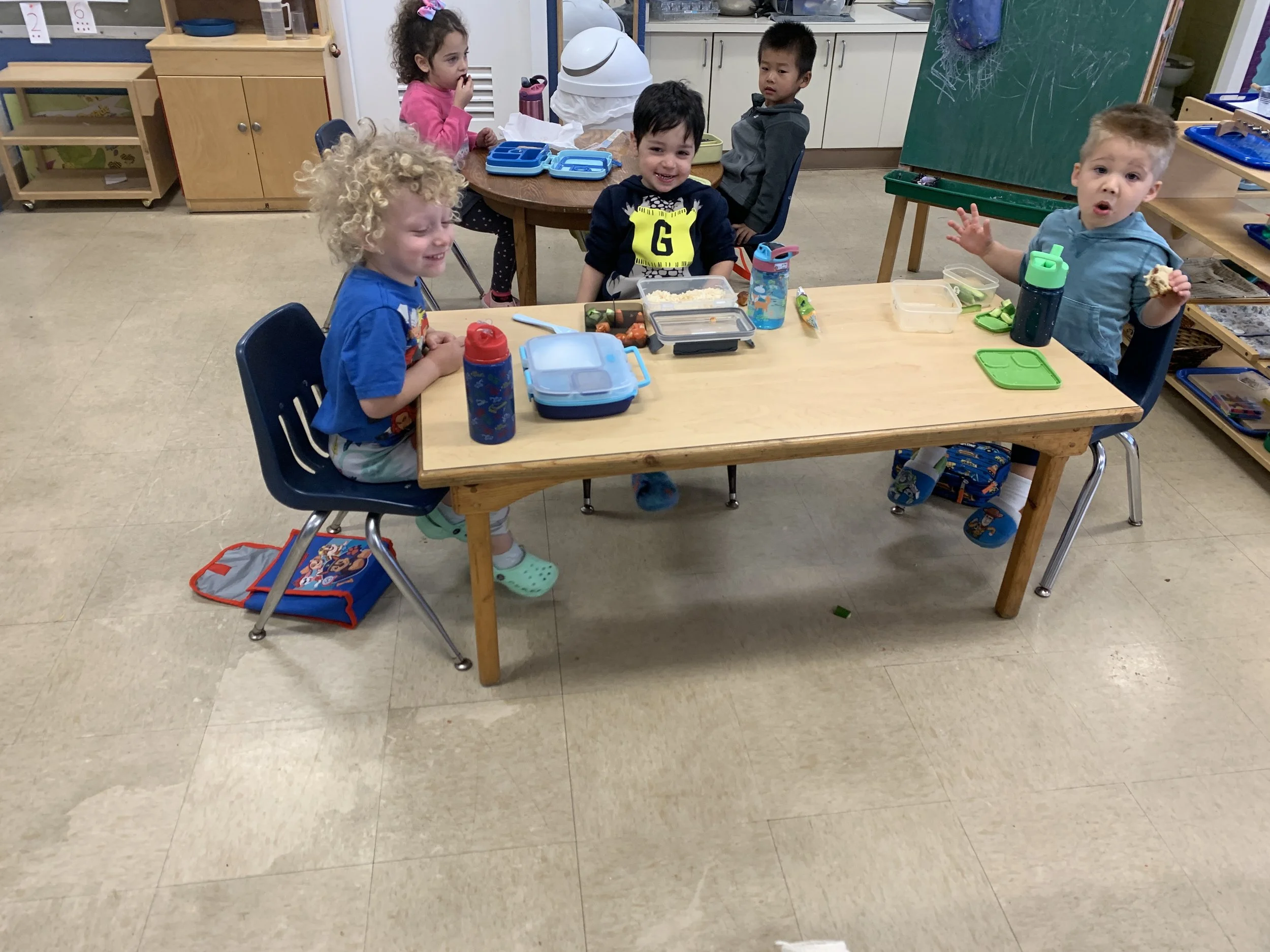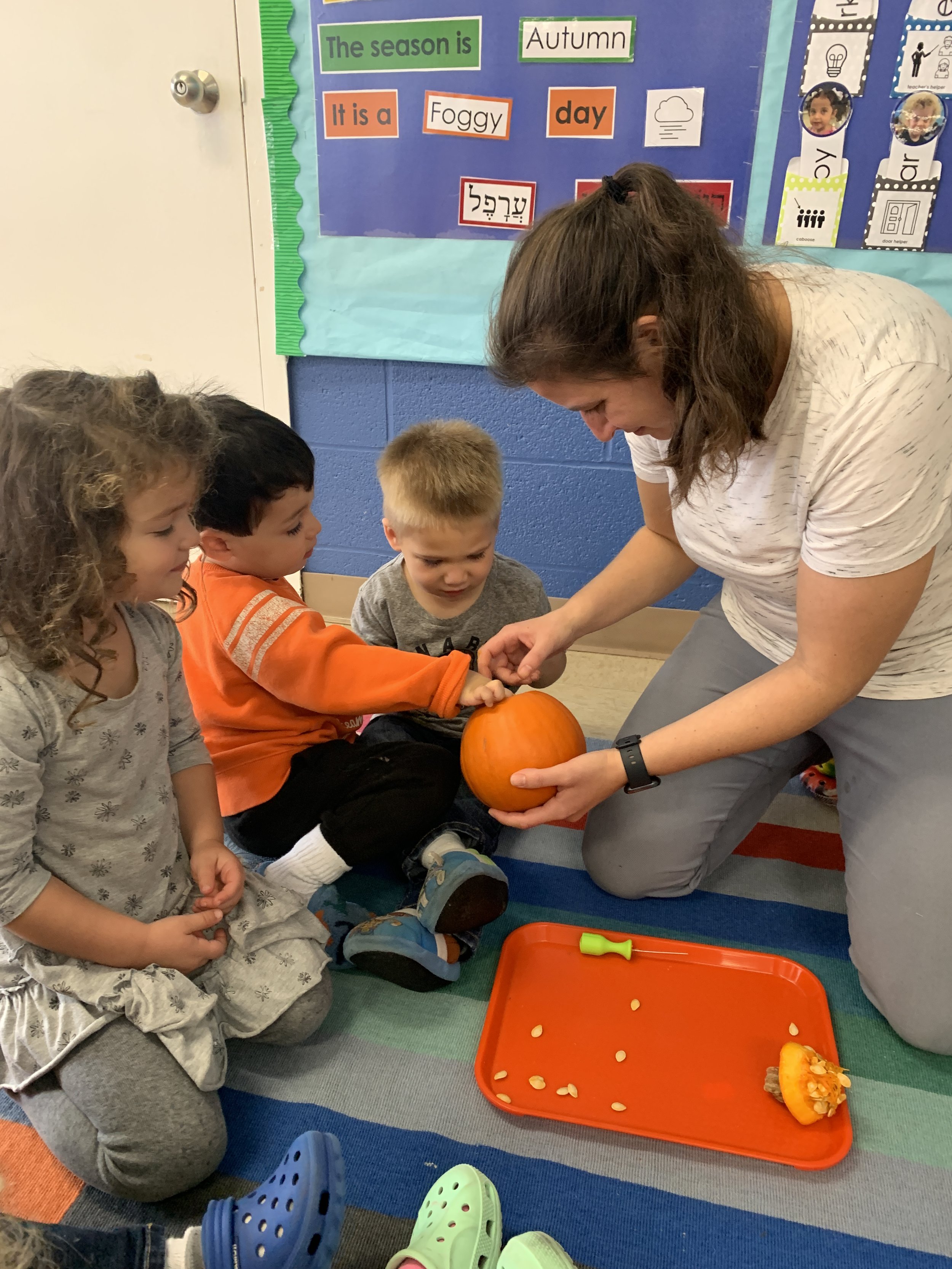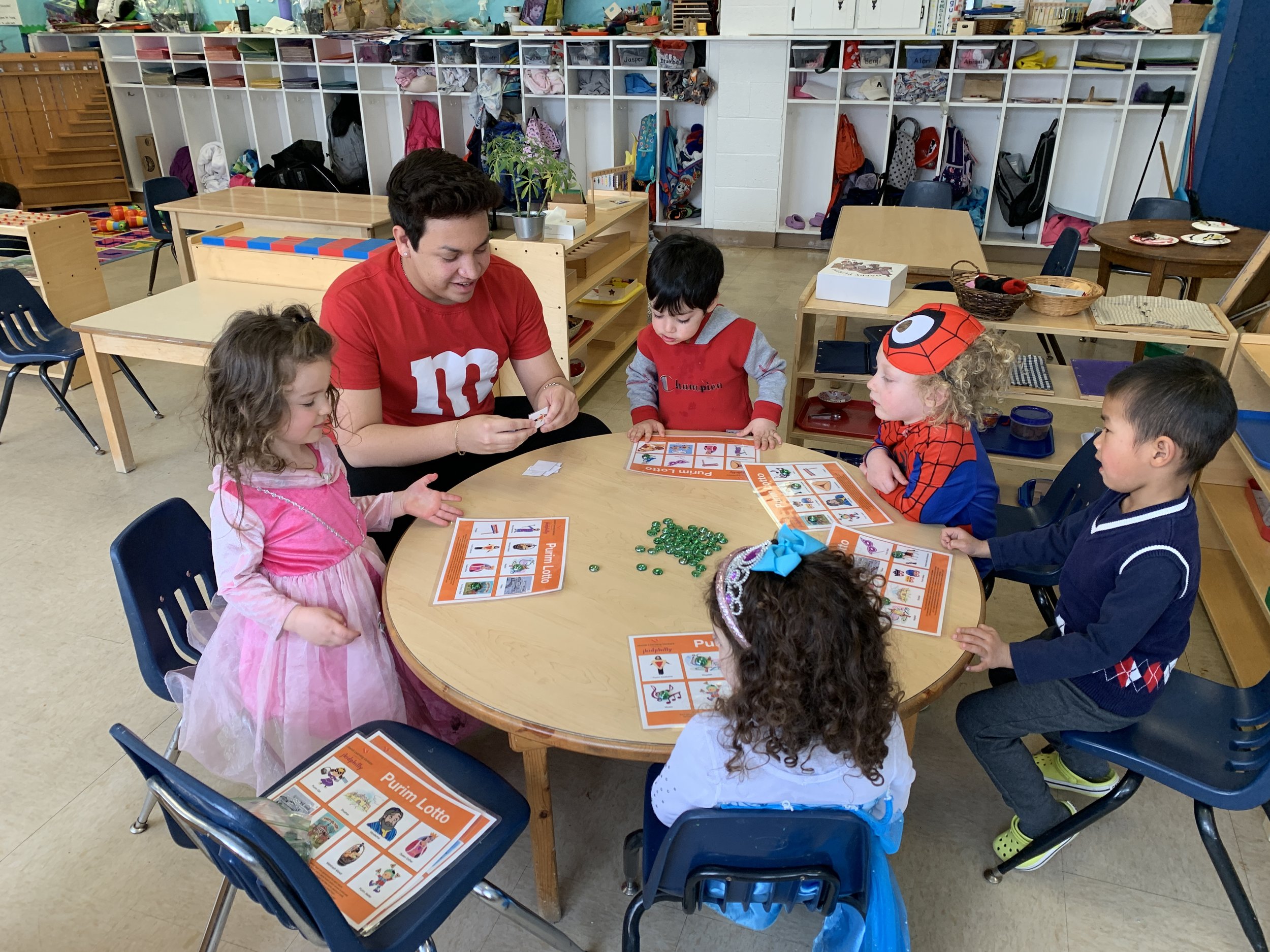Ezra Academy's Montessori Preschool & Kindergarten is a happy, purposeful community, where children are actively engaged in all areas, including science, math, language, and the arts.
Our teachers observe and facilitate, challenging each child and helping to build confidence, skills, and independence. A teacher may be presenting an activity to one child or to a small group, or at other times gathering the entire class to sing, read, act out a story, or share news.
When you walk into our classroom, you may observe a child painting at the easel, a few children reading books, or perhaps someone peeling and slicing carrots; you may see a child preparing freshly-squeezed orange juice, watering the plants, or mopping up a spill. One child may be sequencing cylinders from large to small, another pairing pictures of insects, two singing the “continent song” together, and others rolling out Play-Doh.
We aim to be an indoor-outdoor classroom, appreciating and learning about nature and caring for our garden. Our program is infused with Jewish values, celebrating our rich heritage and traditions through stories, songs, art, and drama—and of course baking challah each week! The children choose their activities under the teachers’ guidance, and learn to be positive participants, along with their peers, in our preschool and kindergarten classrooms and in the wider Ezra community.
Childhood is a special time, and the school day should be a special time, too. Our Montessori preschool and kindergarten is unique: joyfully Jewish, attuned to the needs of every child, and infused with a love of learning and discovery. Children love coming—and we love teaching them.
Apply Today!
☆
Apply Today! ☆


















